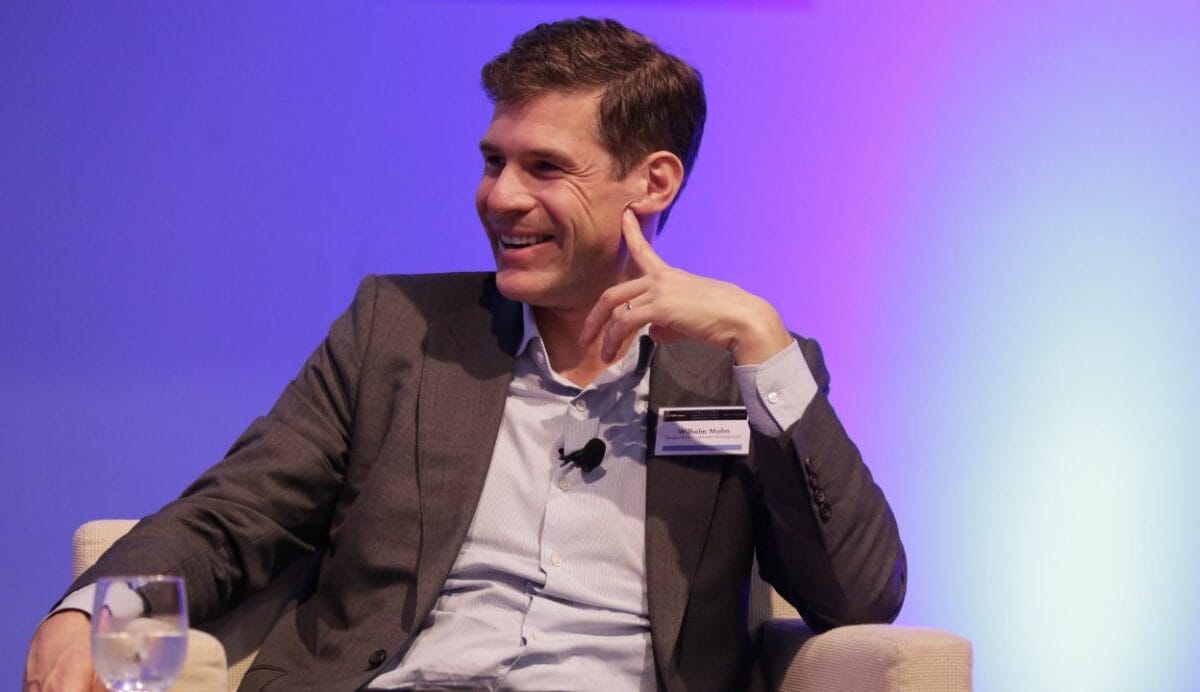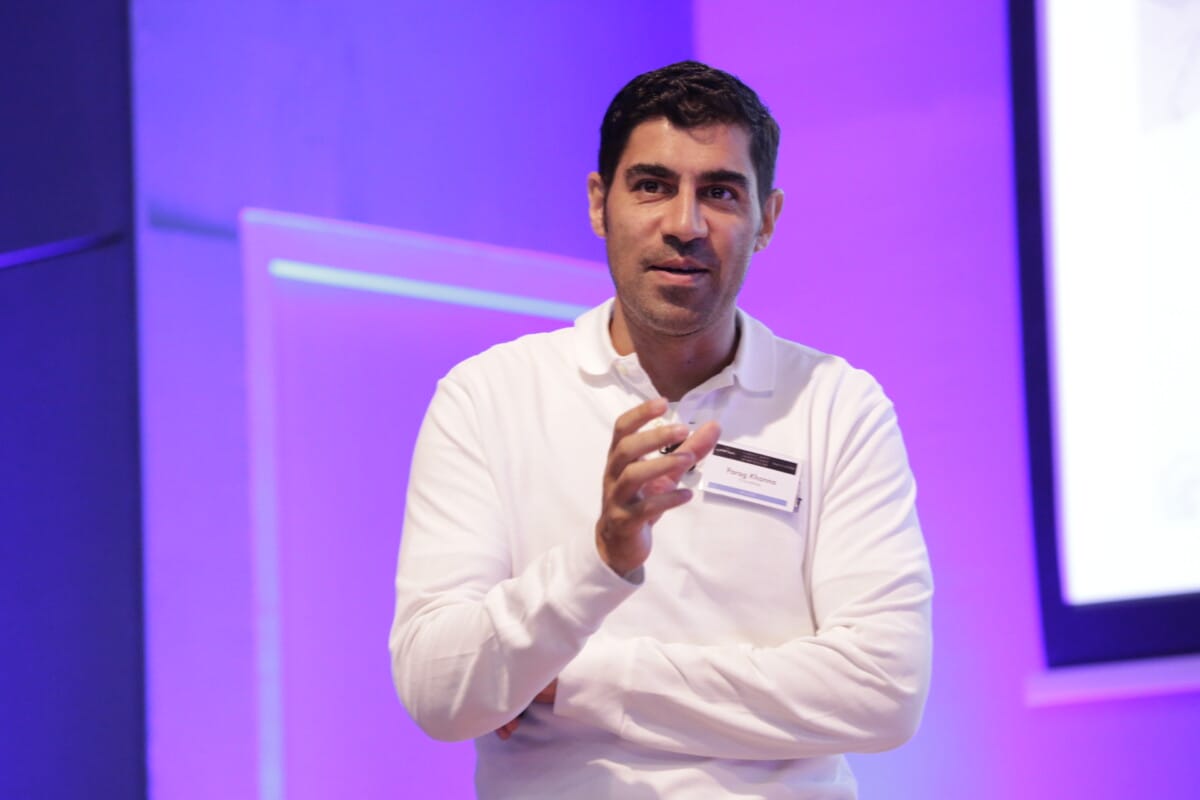Working out which companies have a viable transition path to net zero is a complex task for investors. When it comes to figuring out how a company will get there and how their transition will be financed, more investors are making a distinction between emissions that are hard to abate, and emissions that are expensive to abate.
As a growing number of investors make net-zero pledges, they are not only faced with the job of setting a strategy to achieve that goal, but they’re also faced with answering some fundamental questions about the companies and businesses they invest in, and what it really means to implement a net-zero strategy in practice.
The 2024 Fiduciary Investors Symposium in Singapore last week heard that it’s not a simple task to assess a company’s potential transition to net zero, the technology that might be required to support it, and the role of asset managers in financing the transition.
Norges Bank Investment Management global head of active ownership Wilhelm Mohn (pictured) said investors can’t just focus on companies in a portfolio that are leaders or laggards on transitioning to net zero, “it’s everything in between”.
“A lot of these sectors, as you can guess, are those hard-to-abate sectors, and we expect the transition to be a transition over the next 20 years,” he said.
However, he said that the $1.5 trillion asset owner is now thinking “less about ‘hard to abate’ and more about ‘expensive to abate’” emissions.
“In terms of most of these sectors, the technology and the solutions are there,” Mohn said. “It’s more how you essentially finance it, and how we also as investors can be supportive for long-term decision making.”
Bridgewater co-chief investment officer, sustainability, Carsten Stendevad, said the “hard or expensive” perspective is “a very, very insightful way of putting it”.
Stendevad said Bridgewater research suggests that around 40 per cent of current emissions can be abated using existing technology.
“We have the technologies, we have even sometimes mature technologies, we just have to implement them at scale,” he said. “It will, of course, require capital, but it will require, I would say, ‘normal’ risk capital.
“Then you have the remaining 60 per cent of emission reductions, where the technology is not quite there yet, either because, literally, we don’t have the technology, or because it just hasn’t been proven at scale, or…it’s too expensive. And so, this needs a different type of capital.”
Stendevad said green capital and venture capital is attracted to this type of opportunity, but “the amounts that are needed are so big, and the risks are still quite significant that that’s really the part of the system that is the hardest to make work”.
Stendevad said that making informed decisions on whether a company is doing what it said it would do to transition to net zero, or whether it can even do it, is “such an important question”.
“The starting point must be a fundamental understanding of how a company is related to real-world emissions, whether that be its operations, its energy consumption, its supply chain, its products – in other words, really a comprehensive understanding of scope, one, two, and three [emissions],” Stendevad said.
He said companies fall into three buckets: low-emitters; climate problem solvers; and high-emitters.
He said low emitters do still need to reduce emissions but can do that mostly by switching to renewable energy sources. He said about half of global equity market capitalisation is made up of low-emitting companies.
“So you can kind of think of them as not really part of the problem, not really part of the solution,” Stendevad said.
Climate solution companies are those whose products and services – either accidentally or by design – mitigate climate change.
“That could be, of course, green energy producers; it could be EVs; it could be green tech; and that represents something like 5 per cent of market cap,” Stendevad said.
The remaining companies – close to half the capitalisation of global equity markets – are high emitters, and “this is where the problem is,” he said. “The big question here is, are these high-emitting companies transitioning, or are they not? That’s very much the epicentre of the challenge.
“The whole challenge of net zero is to figure out which of these companies have a credible way of…transitioning their business model.”
Stendevad said Bridgewater’s analysis suggests high-emitting companies that have a credible path to net zero account for about 20 per cent of global market capitalisation – in other words, about half the current population of high-emitting companies has a credible path to net zero, and the other half does not.
Stendevad said investors need to answer fundamental questions before making any decisions to back a company’s net-zero transition plan: is it technically feasible, is it financially feasible, does the company even want to change, and what are its achievements to date?
As much as 40 per cent of global emissions are created by the real estate sector, and Cbus chief executive Kristian Fok said members of his fund – which has its origins in the Australian construction and building industries – work in a sector “that has a huge contribution to carbon, but also has a huge potential to contribute to the reduction in carbon”.
Fok said that as a member of the Materials and Embodied Carbon Leaders Alliance (MECLA), Cbus is looking at “the components that will go into reducing the carbon footprint in terms of the buildings that you construct”.
“It’s how do we stimulate green steel? How do we stimulate zero emission concrete? How do we think about design, timbers, and things like that.
“In a sense the easy bit’s done, which is the trying to make it net zero from an operations point of view. We now need to tackle the harder bits. But the value becomes in the tenants and now moving to saying, OK, it’s not just the operating footprint, it’s actually the footprint of the development that we’re going in. So there’s sort of a race to the top.”
Fok said the fund is aiming to put its money where its mouth is and one of its current commercial property developments is aiming for a level of embodied carbon 30 per cent below the current benchmark.
“From a cost point of view it’s quite interesting, because it is more costly to construct,” Fok said. On the other hand, because it’s an attractive building to work in because of its environmental credentials, lease incentives paid to tenants are lower.
“The other thing is that we’re able to issue green bonds,” Fok said. “We just recently issued a billion dollars of green bonds against the portfolio, and they’re a lower cost of finance. So, we’re seeing the whole ecosystem continue to evolve to try and encourage that innovation.”
Assessing the potential path to net zero and its impact on a company is complex enough even where a manager has made an active decision to invest. But for an asset owner like NBIM, which by virtue of its sheer scale owns about 1.5 per cent of the world’s total equities, the task is immeasurably more complicated.
Mohn said even though the bank is “a largely passive investor, and largely invested everywhere forever” it has an active program of engaging with companies it invests in.
“It’s probably the most important thing we can do, it’s most important from a standards development point of view,” he said.
“That’s how you get, you can call it, sustainability beta, if you will. We target a 3 per cent real return for the portfolio, and that’s how you get it on the long-term. We believe we have an inherent interest in sustainable development.”
Mohn says “it’s really important to start with that piece of the puzzle, and then it comes to the companies and that’s very different, it’s very different game”.
“We have to prioritize,” he said. “We think about the exposure, the companies, and then think about the actual management of it, and then the performance. Based on that, you can [rank companies].”
Mohn said that for net-zero targets in particular, NBIM has developed a Climate Action Plan that sets “an ambition for our companies to have operations aligned with net zero by 2050”.
“That means having targets by 2040,” he said. “For high emitters we expect them to set targets already. And we’ve prioritized our top 70 per cent of financed emissions, some 250 companies, those direct emissions, scope one and scope, two; and then the most important indirect emitters, that’s essentially bank and automotives, for more in depth dialogues where we are really seeking to not just ask the questions around governance and policies, but also understand the details of their long-term transition strategies.”
Mohn says NBIM has produced a document setting out its expectations on climate change, covering a range of sustainability topics and available publicly.
“But what we did with the expectations on climate this year is that we changed it quite significantly towards something that is very useful for a consistent and long-term dialogue with the company as it transitions,” Mohn said.
He said NBIM has some foundational expectations around board accountability and governance, setting targets and working in a science-based manner to assess timeliness of interim targets.
“And then we break it down [into steps]: where you start, and how as you go through essentially transitioning, and that’s worked out really, really well in company dialogues, and really allows us to pick and mix and match the level of maturity of the company,” he said.


